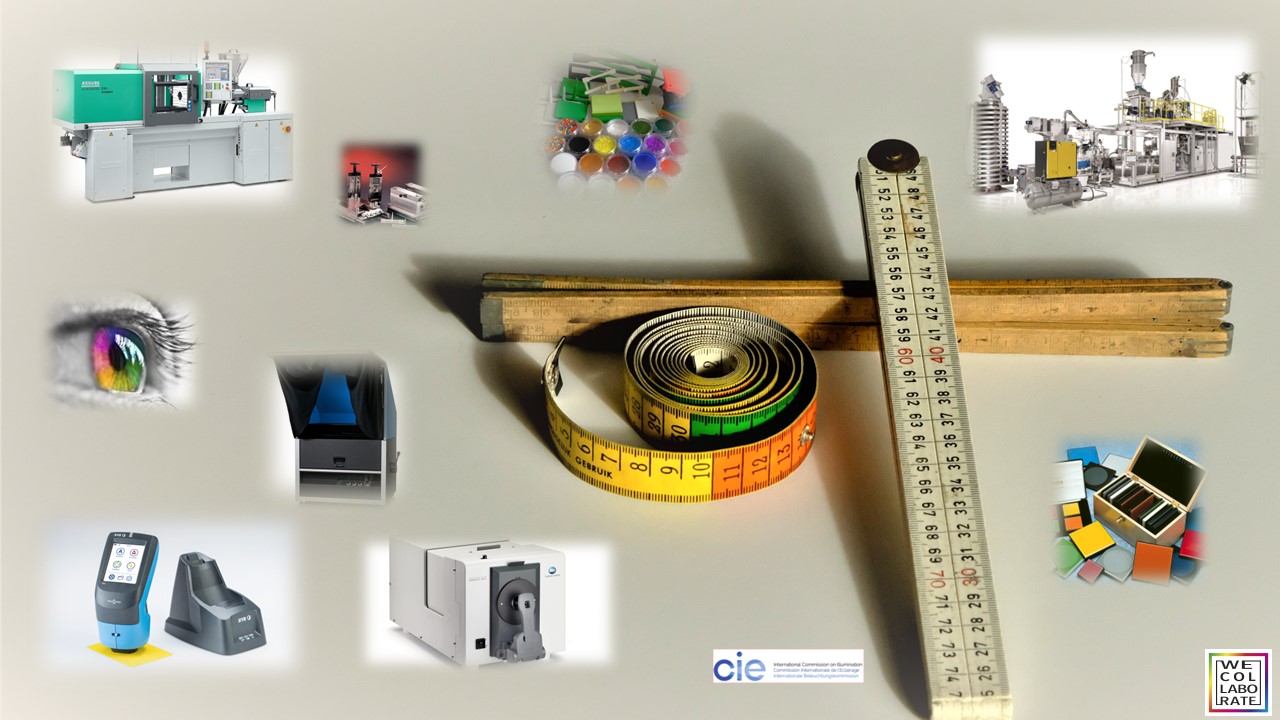The building blocks of Colour!

The webinars on colour and analysis are offered regularly, especially since Corona (working from home) and particularly by the manufacturers of Colour spectrophotometers, such as BYK Instruments, Datacolor, Konica Minolta and X-rite.
These webinars generally comprise an introduction to colour perception, ordering, measurement and communication and are often referred to as the building blocks of Colour.
The main goal is of course to sell spectrophotometers and generate leads, the webinars are given as a kind of service; they are compact, of short duration, can be followed online and, above all, free.
But the building blocks of Colour include much more!
In addition to the physics definition and the human colour experience, various technological themes are part of the Colour package. Because what do you do with the L*a*b*? What do they mean in practice? How do you use them statistically, in specifications and process control? How do you communicate colour and colour values? What does the colour, and the corresponding variation, mean for raw materials versus end product? How do you analyse in a correct, reproducible and repeatable way? How do you deal with human perception - however influenceable, also potentially very visible - versus mathematical colour measurement? How do you manage variation in the various colours, because they are certainly different for red and orange versus white and black; not to mention all sorts of colours with metallic and effect pigments.
And while weColLaborate focuses mainly on the technology of colour for plastics and other materials, there is of course also a world to discover when it comes to the psychological, artistic and architectural side of colour: also very interesting!
Are the webinars of value then? Certainly!
Because it teaches you at the very least that the human eye (and brain), however valuable, has its limitations. That people have a natural preference, can be influenced and are certainly not infallible. It also teaches you that a reproducible and repeatable analysis of colour is possible. And it teaches you how to communicate about colour.
So for a first introduction to the colour theory, these webinars and training courses are enormously suitable.
But more is needed to train colourists, lab technicians, production employees, technical marketing employees and specialists for plastics and other materials. Then you also get into the use of the right raw materials, including pigments and dyes, and the subsequent material properties. How do you produce colour recipes that are stable, durable and formulated within the customer's specifications, without affecting the other properties. Then it's about the analysis itself, because it makes a lot of difference whether you want to analyse pigments and dyes or analyse fibres or plastic parts. And then it’s also about the process of colour compounding, injection moulding or 3D printing.
Colour is a property that is much more than just the aesthetic side, it also says something about the quality of your processes (development, production and analysis) and the raw materials. Becoming a colourist takes more than a half-day webinar; it requires a thorough training program, tailored to the processes within which a colourist works. And that can easily take 2 years and, from my own experience, you never stop learning!
So take part in the webinars of the good manufacturers of spectrophotometers, but realise that there is much more to learn about the building blocks of Colour.
Feel free to contact us or request a quotation




